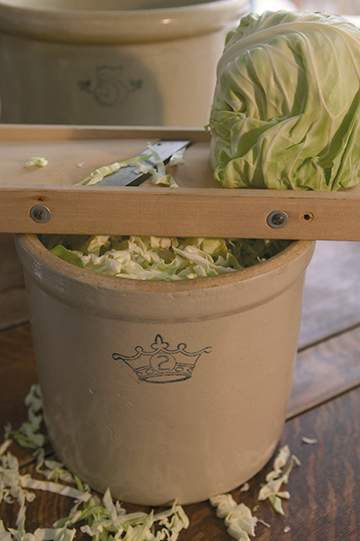Calling all fans of fermented and cultured food! I received an email recently from our 2009 Farmgirl of the Year, Carrie Williams, telling me that her first attempt to create Kombucha was a huge success. That got me to thinking …
Do you savor sauerkraut,
crave kombucha,
yearn for yogurt,
hanker for true sourdough bread?
If so, you’ve probably considered creating your own cultured cuisine.
Maybe you’ve already given it a whirl.
Whether you’ve just begun a foray into fermentation or are itching to try it, lingering March cold weather can prove challenging to the unseasoned culturist.

Why?
Fermented foods thrive in warm temperatures. Warmth makes all of those good little yeasts and bacteria happy and helps them grow, creating the healthy and delicious effervescence that delights our digestive systems.
Cold temps, however, keep cultures from “doing their thing.” When kept too cool, yogurt and kefir can end up thin and bitter. Kombucha can take an extra week to ferment or may fall flat. Veggies can end up moldy instead of flavorful and fermented.
But don’t get discouraged—March is a fine time to ferment; you just need to know how to work around winter’s lingering chill.
Clever Ways to Keep Your Cultures Warm
- A seedling mat can be set to around 75°F, which will encourage yogurt, kefir, and buttermilk to culture like crazy.
- A culturing box can be created by placing a jug of hot water in a plastic or foam food cooler. Check the cooler occasionally and refresh the hot water to maintain a temperature of at least 70°F.
- Your oven may be able to work up enough heat to ferment with only the inside light on. Test it first by turning on the light and placing a jar of water in the oven. Check the temperature of the water over the course of several hours to make sure the temperature hovers around 75°F.
- Try placing your culturing crock in warm places around the house—near a lamp, on a warm refrigerator, or even on top of the VCR (just make sure to place the crock in a catch pan in case it spills).
- Insulating your jar of fermenting food with a towel or blanket may be enough to help it retain enough of its own heat to keep culturing.
Happy culturing.





















































Down here in Florida, we have more months of the year where cultured things are hard to make unless you have a controlled environment. My luck with yogurt has not been good at all. Too runny and sour. I am not sure if it is me or the environment, so I pretty much gave it up. Cultured foods take a real skill and my few efforts at sour dough started and yogurt have pretty much all ended up in the trash!!
Winnie, I used to make yogurt all the time and don’t think it is dependent on the whether? If my memory serves me right, you just heat a gallon of milk (I had raw milk) to 180 degrees–just before it boils. Then let it cool down to around 110 degrees. Add to this a cup of yogurt with life cultures from the store. Put it in a big plastic cooler with a lid. Inside set a heating pad on low, put your gallon of warm milk with the yogurt stirred in, surround it with towels, and let it set for at least 4 hours (with the lid on the cooler). Tip it slightly at the end of this time, and see if it is firm. The longer you let it set, the sourer it will become. Good Luck!
Sorry, I meant “weather.”
I ferment all of the time. My favorite source of information came in the Sandor Katz book “Wild Fermentation”. He has another book out now too. I have always got Kombucha on my counter fermenting as I consume the last batch. Saurkraut and Kimchee! I also make my own raw milk Yogurt on a weekly basis.I love the fermented cream top on this! I keep a sourdough starter in my fridge between uses and take out a start and add to it often. It likes to be used, and for some who might feel threatened by the look of a sourdough culture kept in the fridge that separates into the dark liquid with the solid tan blob under it, this is good sourdough. Just warm it up stir it and use it. Then feed it and let this set a few days on the counter. Then you can store it in the fridge. Been doing this for years.